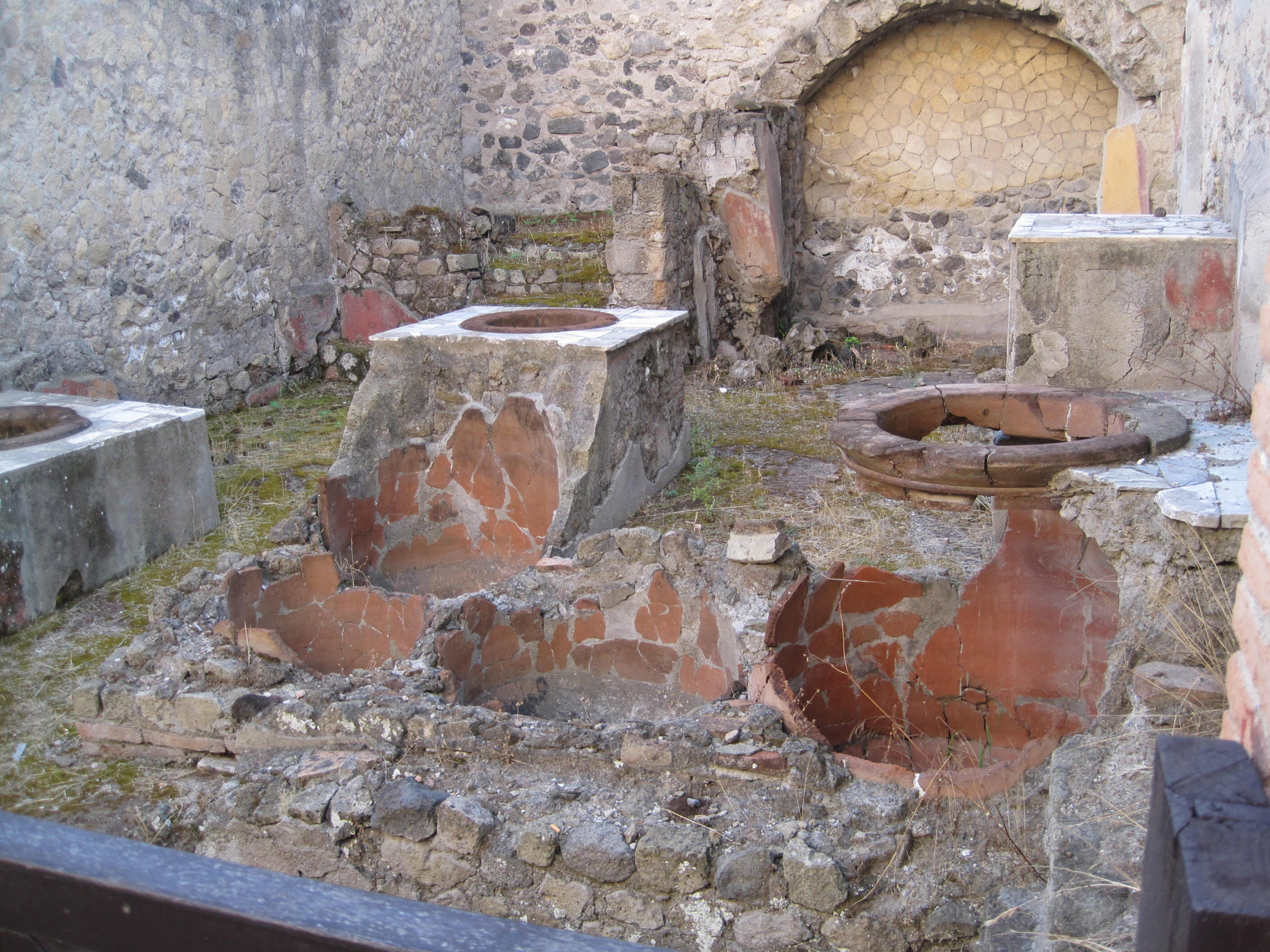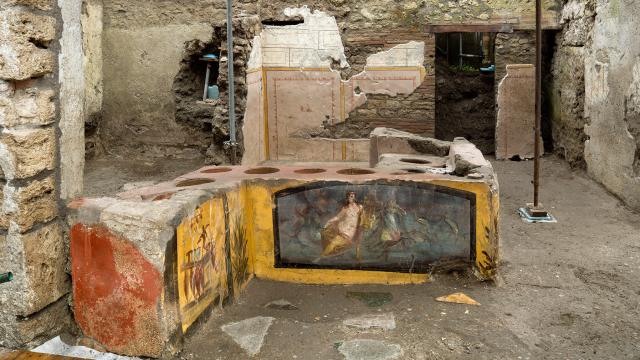Before its demise at the explosive hands of Mt. Vesuvius, Pompeii was a bustling town with a strong agricultural economy and an appetite to match. Painted scenes and archaeological remains have long hinted at the diets of its doomed residents. On Saturday, the Pompeii Archaeological Park announced the excavation of one of the town’s thermopolium, or fast-food-and-drink spots, offering insights on what the joint served.
“The remains of foodstuffs, including animal bones, match some of the paintings on the counter,” Virginia Campbell, an ancient historian and archaeologist at The Open University in England, wrote in an email. “There has always been speculation that the images of food match what was consumed, but this is unequivocal proof in one shop.”
Pompeii’s Regio V is the gift that keeps on giving. The mostly unexcavated area of about 54 acres comprises most of the town’s northern end and a bit of its southeastern portion. In 2018, a headless skeleton was found pinned under a huge stone (at first thought to be crushed under the rock, the skeleton’s skull was found soon after). Later that year, a charcoal scrawl was found preserved in the region’s House of the Garden — and it mentioned October 17, a day two months after the long-accepted eruption date of August 24, 79 CE, suggesting that we may have to revise the timing of the cataclysm. (A slew of some of the region’s other fascinating finds can be found here). The excavations in Regio V are employing state-of-the-art archaeological techniques that didn’t exist when other parks of Pompeii were being dug up.
[referenced id=”1531890″ url=”https://gizmodo.com.au/2020/11/new-remains-found-at-pompeii-show-the-agony-of-mount-vesuvius-victims/” thumb=”https://gizmodo.com.au/wp-content/uploads/2020/11/24/bhaycvjiaf7kxzroeq0y-300×168.jpg” title=”New Remains Found at Pompeii Show the Agony of Mount Vesuvius’ Victims” excerpt=”Archaeologists working near the ancient city of Pompeii have uncovered the remains of two men who were likely trying to find shelter during the catastrophic eruption of Mount Vesuvius in 79 AD.”]
“We are getting information we’ve never had before all at once, rather than going back over old and sometimes not well-recorded materials and attempting to apply new techniques, sometimes with poor results,” Campbell wrote.
First excavated in 2019, the thermopolium in Regio V has turned up pantry items like amphorae (tall, two-handled containers) and flasks, the remains of duck, swine, goat, fish, and land snail, and bean residue at the bottom of a dolium, or jar. The extra-culinary finds included human and dog remains, as well as vivid frescoes on the sides of the thermopolium’s countertop. (The holes in the countertop were where the dolia were embedded). Bordered with mustard-yellow, the frescoes depict an inky-black dog on a leash and a steely-blue seahorse carrying a Nereid; a still life of strung-up mallard ducks and a reddish-brown rooster advertise some of what the food stall likely had on offer until its final day in operation.

“My book has 163 [thermopolia],” Steven Ellis, an archaeologist at the University of Cincinnati and author of The Roman Retail Revolution, which goes long on the retail counters like the one recently unearthed, said in a phone call. “But guess what? Now it’s 164.”
Ellis says that the Regio V thermopolium (which would have gone by other names back then, like taberna, caupona, or popina) is unique for its frescos, its size and counter shape, and the size of its dolia. Since the last thermopolia were excavated about half a century ago, the Regio V site offers a glimpse at what such a storefront would have looked like back in 79CE, without the weathering and degradation of modern exposure.
“They’re an invention of the early first century [CE],” Ellis said, “and we find so many of them at Pompeii, not just because Pompeii was destroyed overnight, but because Pompeii was a city of the first century [CE]; the halcyon of this urban form of retail sale.”
One human victim in the food-and-drink stall was estimated to be at least 50 years old at death and seems to have been lying on a bed in an inner chamber at the time of the eruption, based on nails and wood residue found underneath the remains. (It’s hard to say for sure, since 17th-century looters dug tunnels that disrupted the site). Bones of another individual were found inside a dolium; according to the park authorities, they were possibly placed there by the looters. A small dog’s remains were also discovered. The park said that the dog was an adult less than 10 inches (25.4 centimeters) at its shoulder, which suggests it was bred to be lap dog-sized.
The dead dog can be distinguished from the canine fresco decorating the counter, the latter being a bigger dog. Around the border of the dog fresco was a Roman-era graffito, reading NICIA CINAEDE CACATOR — literally, “NICIAS [the subject of the insult] SHAMELESS SHITTER.” (It’s not nearly the only profanity scrawled by the Pompeians).
Even with the thermopolium long out of business, at least shitposting is still very much in style.
